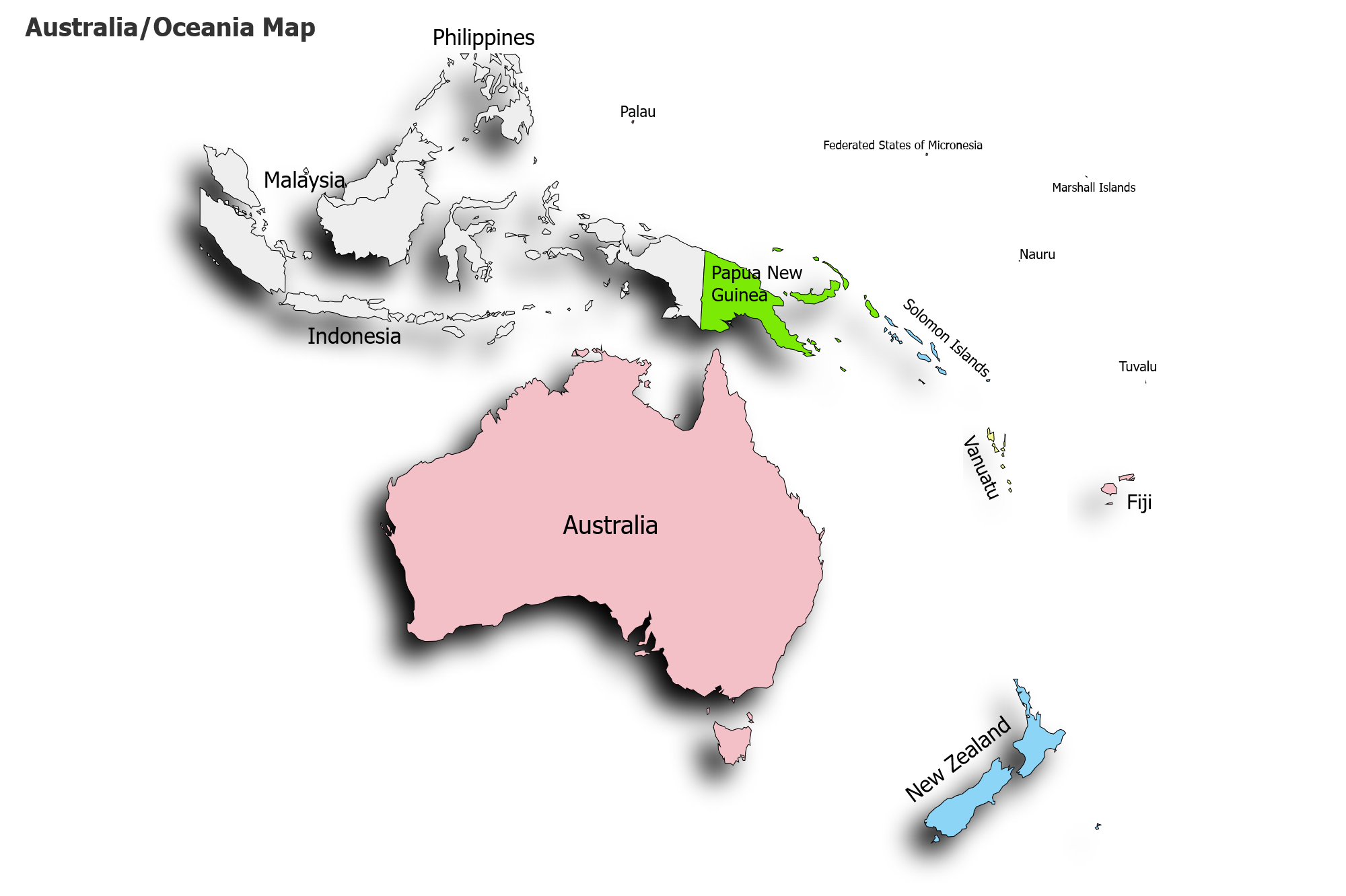Oceania Continent (Austrialia)
A brief about australian continent

About Australia
The Australian continent, located mainly in the Southern Hemisphere, is the smallest and flattest of Earth's continents. Spanning from the Indian Ocean to the Pacific Ocean, it's known for its unique wildlife, vast deserts, and stunning coastlines. With just over 40 million people living in six countries, including Australia, New Zealand, and Papua New Guinea, the continent offers a blend of modern cities and untouched natural beauty.
Covering an area of about 8.6 million square kilometers, Australia is the largest country on the continent and is famous for its Outback, Great Barrier Reef, and iconic landmarks like the Sydney Opera House. Despite its relatively small population compared to other continents, Australia's diverse landscapes and rich indigenous culture attract millions of visitors each year. With its warm climate and laid-back lifestyle, the Australian continent offers an unforgettable experience for travelers seeking adventure and relaxation alike.
Countries and Land Area
The Australian continent, comprising Australia, New Zealand, Papua New Guinea, and several smaller island nations, is surrounded by the Indian Ocean, Pacific Ocean, and Tasman Sea. Its landmass is distinct from Asia, with no natural borders separating the two continents.
Australia, the largest country on the continent, spans approximately 7.7 million square kilometers, making it the sixth-largest country in the world by land area. It is renowned for its diverse landscapes, including the Outback, Great Barrier Reef, and stunning coastlines.
New Zealand, located southeast of Australia, covers around 268,000 square kilometers, known for its picturesque scenery, including mountains, fjords, and lush forests. Papua New Guinea, situated to the north, occupies approximately 462,000 square kilometers, featuring rugged terrain, dense rainforests, and vibrant cultures.
Regions
The Australian continent can be divided into regions such as:
- Outback
- Coastal Regions
- Tropical North
- Murray-Darling Basin
- Snowy Mountains
- Great Dividing Range
- Tasmania
Languages
Australia is home to a variety of languages, reflecting its diverse cultural heritage. While English is the most widely spoken language, there are also many Indigenous languages spoken by Aboriginal and Torres Strait Islander peoples. These languages belong to diverse language families, such as Pama-Nyungan, Yolngu Matha, and Kriol.
Additionally, Australia's multicultural society has led to the presence of numerous other languages, including Mandarin, Italian, Arabic, Greek, and Vietnamese, among others. This linguistic diversity highlights the richness of Australia's cultural tapestry and the importance of language preservation and revitalization efforts.
History and Culture
The history and culture of Australia are really interesting. For thousands of years, Aboriginal and Torres Strait Islander people have lived there, with their own languages, traditions, and stories about the land. They have a deep connection to nature and believe in the Dreamtime, where the world was created.
Later on, Europeans came to Australia and changed things a lot. They brought new ways of living and government systems. Over time, people from all over the world came to Australia, making it a diverse and multicultural place. Today, Australia celebrates its mix of cultures through events and festivals, showing how everyone can come together and share their traditions.
Landscapes
Australia has a lot of different landscapes and cool places to visit. In the middle, there's the Outback, which is a big desert with red sand and huge rocks. You can see famous things like Uluru (Ayers Rock) and Kata Tjuta (the Olgas) there.
Near the coast, Australia has amazing beaches and islands. Places like Bondi Beach in Sydney and the Whitsunday Islands are perfect for swimming, surfing, and just hanging out. The Great Barrier Reef is the biggest coral reef in the world and a great spot for snorkeling and diving.
Australia also has cool buildings and historic places. The Sydney Opera House is famous for its unique shape, and Fremantle in Western Australia has old buildings and lots of art. Whether you're exploring the desert or relaxing on the beach, Australia has something cool for everyone.
- Read More:
- About Australia |
- Facts